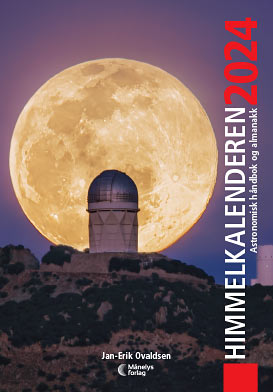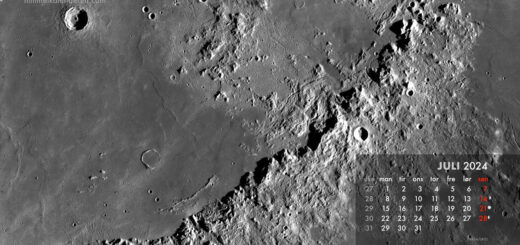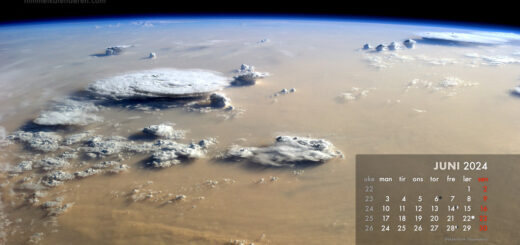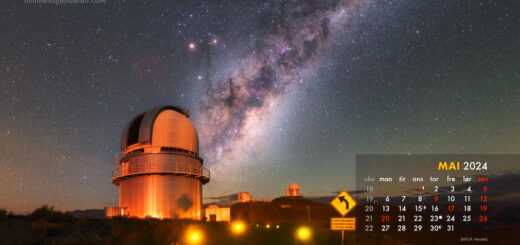Jan-Erik Ovaldsen
I have done research in the fields of photometry, quasars and gravitational lensing (Cand. Scient/Master’s thesis) as well as gamma-ray bursts and their host galaxies (PhD level). I have published several papers in refereed journals, published books on popular astronomy, and written many articles and blog posts on astronomy and celestial events. My public outreach experience also includes projects like the International Year of Astronomy 2009 and various local astronomy events in Oslo, Norway. Due to illness I am no longer active as a researcher.
In the following I provide some supplementary information taken from my old website at the Institute of Theoretical Astrophysics, University of Oslo, Norway.
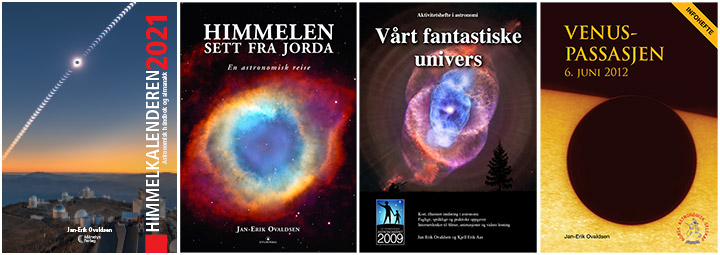
Popular science publications
Himmelkalenderen («The Celestial Calendar»)
Astronomical handbook and almanac (224 pages) published annually in Norway since 2005
Himmelen sett fra Jorda («The Heavens seen from Earth»)
Large format astronomical picture book (192 pages) published in Norway, Denmark, Sweden and Iceland in 2007–2008
Vårt fantastiske univers («Our amazing universe»)
Educational booklet (60 pages) about astronomy, offered for free to 20 000 schoolchildren during the International Year of Astronomy 2009
Venus-passasjen 2012 («The 2012 Transit of Venus»)
Booklet (12 pages)
I have, in addition, contributed astronomy articles to magazines and newspapers.
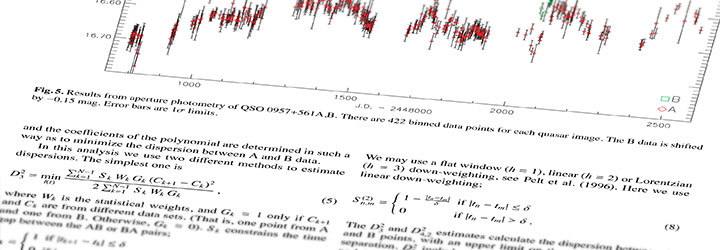
Scientific publications
Refereed journal publications as first author:
A Search for Host Galaxies of 24 Gamma-Ray Bursts
J.-E. Ovaldsen et al., 2007, The Astrophysical Journal, vol. 662, pp. 294–303.
Five nights of intensive R- and V-band photometry of QSO 0957+561A,B
J.-E. Ovaldsen et al., 2003, Monthly Notices of the Royal Astronomical Society, vol. 345, pp. 795–799.
New aperture photometry of QSO 0957+561; application to time delay and microlensing
J.-E. Ovaldsen et al., 2003, Astronomy & Astrophysics, vol. 402, pp. 891–904. (See also my Master’s thesis project below.)
A search for host galaxies of 24 GRBs using the Danish 1.54m
J.-E. Ovaldsen et al., 2006, Il Nuovo Cimento (conf. proc.), vol. 121, N. 12
Co-authored refereed publications:
The Afterglows of Swift-era Gamma-Ray Bursts. I. Comparing pre-Swift and Swift era Long/Soft (Type II) GRB Optical Afterglows
D. A. Kann et al. (74 co-authors incl. J.-E. Ovaldsen), 2010, The Astrophysical Journal, vol. 720, pp. 1513–1558
GRB 070306: A Highly Extinguished Afterglow
A. O. Jaunsen et al. (14 co-authors incl. J.-E. Ovaldsen), 2008, The Astrophysical Journal, vol. 681, pp. 453–461
GRB 051022: Physical Parameters and Extinction of a Prototype Dark Burst
E. Rol et al. (21 co-authors incl. J.-E. Ovaldsen), 2007, The Astrophysical Journal, vol. 669, pp. 1098–1106
The nature of the X-Ray Flash of August 24 2005
J. Sollerman et al. (25 co-authors incl. J.-E. Ovaldsen), 2007, Astronomy & Astrophysics, vol. 466, pp. 839–846
Supernova 2006aj and the associated X-ray flash 060218
J. Sollerman et al. (25 co-authors incl. J.-E. Ovaldsen), 2006, Astronomy & Astrophysics, vol. 454, pp. 503–509
Gravitationally Lensed QSOs: Optical Monitoring with the EOCA and the Liverpool Telescope
L. J. Goicoechea, A. Ullan, J.-E. Ovaldsen, E. Koptelova, V. N. Shalyapin, R. Gil-Merino, 2006, Conference proceedings
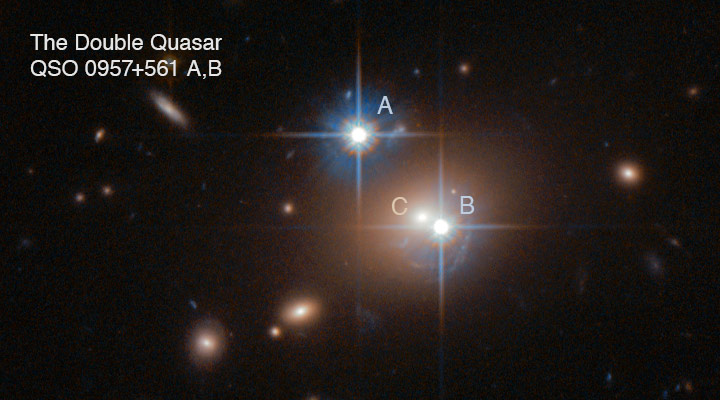
Hubble-image of the gravitationally lensed quasar QSO 0957+561 with the two blue quasar images (A and B) and the «reddish» lens galaxy (C) close to the southern component. Photo: ESA/Hubble & NASA
Master’s thesis in Astronomy
I finished my Master’s (or Cand.Scient) study in astronomy in 2002 at the Institute of Theoretical Astrophysics in Oslo. The title of my thesis was New Aperture and PSF Photometry of QSO 0957+561A,B – Application to Time Delay and Microlensing.
The light from a distant quasar called QSO 0957+561, which is the extremely bright core of an active galaxy, is bent due to the gravitational field of a massive intervening galaxy located between us and the quasar. This light bending produces two images (A and B) of the same object. This «double quasar» was the first gravitationally lens system to be discovered (1979).
Five years (1992–1997; approx. 2650 images) of optical observations of QSO 0957+561 were analyzed using a new photometry package developed by Jan Teuber and me (photometric data table is available below). My supervisor was Prof. Rolf Stabell. The CCD images were kindly provided by Prof. Rudy Schild (Harvard-Smithsonian Center for Astrophysics, Cambridge, USA).
The fully automated program was written in the IDL environment and incorporated all operations needed to produce the final light curves of the quasar images: source detection and localization, field star photometry, calibration, and finally, photometry of the quasar images. We also corrected for the light-contamination by the lens galaxy and for the crosstalk between the closely juxtaposed A and B quasar components (both effects are seeing-dependent). Both aperture photometry and PSF-fitting photometry were performed.
From the brightness data, the time delay between the twin images was determined utilizing two different methods: a dispersion estimation technique and chi-square minimization. We inferred a time delay of 424.9 days, with an estimated 1-sigma error of 1.2 days.
The effects of gravitational microlensing on the measured brightness of the two quasar images were briefly investigated. Microlensing-induced variations with a time scale of a year and amplitude of ~0.05 magnitudes were observed. A few other tentative fluctuations in the microlensing curve had shorter time scales.
We also noted several conspicuous, simultaneous fluctuations in the two quasar components, which cannot be attributed to microlensing (or intrinsic quasar fluctuations or program errors for that matter). The exact cause of this «zero-lag correlation», which is also seen in data sets from other researchers, is yet unknown.
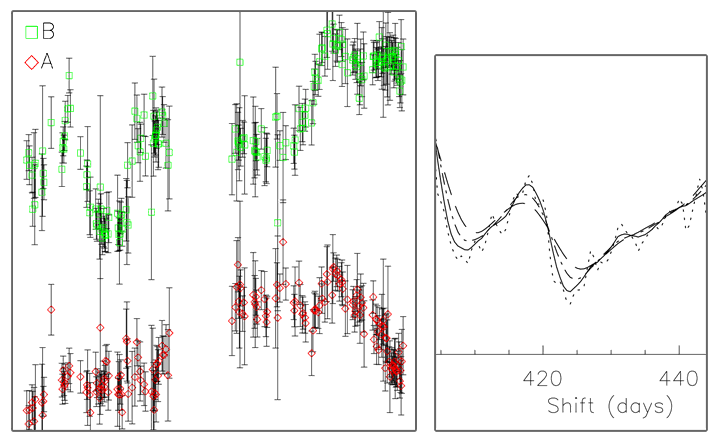
Left: A small section of the A and B quasar light curves. Right: Graph indicating the global minimum (around 425 days) of the time delay dispersion estimate. Figure: J.-E. Ovaldsen
Download
My thesis can be downloaded in PDF-format here (6 MB, 144 pages).
PS: The main topics and results from the thesis are presented in a refereed paper in Astronomy & Astrophysics.
QSO 0957+561 photometry data
A table containing 422 entries of photometry data for each quasar image can be found here.
Details on the data reduction are found in the above-mentioned thesis and A&A paper.
Conferences and workshops
- 2006, 20 Nov.–1 Dec.: XVIII Canary Islands Winter School of Astrophysics, «The Emission Line Universe» (Tenerife, Spain)
- 2006, 5–9 June: Swift and GRBs: Unveiling the Relativistic Universe (Venice, Italy)
- 2005, 14–17 Dec.: Cosmology 2005: A reality check (Dark Cosmology Centre, Cobenhagen, Denmark)
- 2004, 11–16 Apr.: Mitchell Symposium on Observational Cosmology (Texas A&M Univ., USA)
- 2004, 26–30 Jan.: Mathematical Challenges in Astronomical Imaging (UCLA, USA)
- 2003, 1 Sep.–31 Dec.: Research Associate, Institute of Theoretical Astrophysics, Univ. of Oslo (Norway)
- 2003, 1–12 July: NorFA Summer School on Observational Astrophysics (La Palma, Spain)
- 2001, 4–6 June: GLITP Workshop in Gravitational Lens Monitoring (IAC, Tenerife, Spain)
Computer skills
IDL, IRAF, Simula, LaTeX, some HTML, UNIX/Linux/macOS, Pages (mac), Word, WordPress, and Adobe Photoshop and InDesign
Languages
Norwegian, English, plus some German and a little bit of Spanish
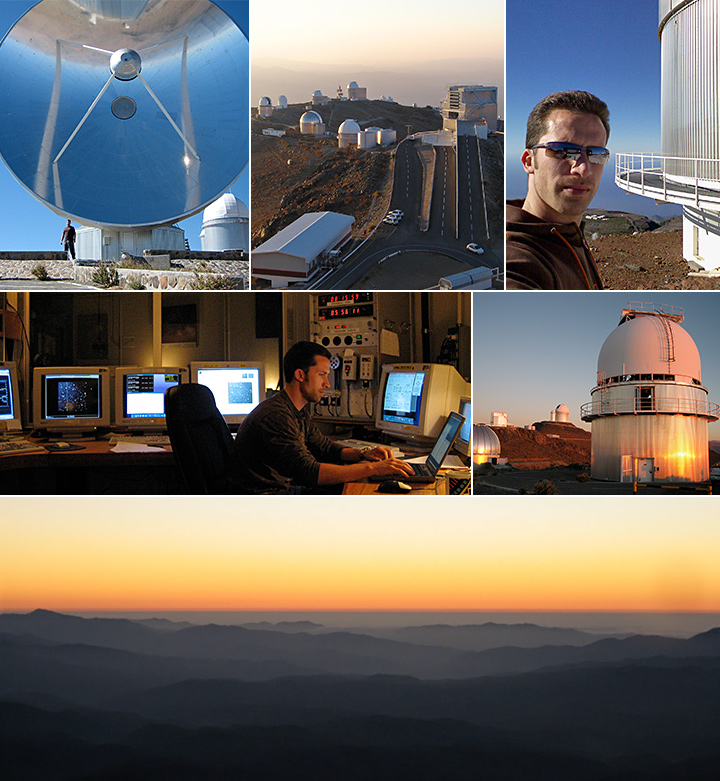
Image at top right was taken at the Nordic Optical Telescope on La Palma, Canary Islands. All other images were taken at ESO’s La Silla Observatory in Chile. Credit: Jan-Erik Ovaldsen


